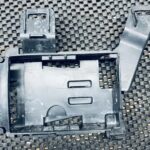XMRig-Nvidia is a popular miner for Monero and other CryptoNight-based cryptocurrencies. However, users sometimes encounter crashes, hindering mining operations. This article delves into a specific crash scenario related to the “Start-159” error (inferred from log output and user description), offering potential solutions and troubleshooting steps. While “start-159” isn’t a formally documented error code, it represents the user’s struggle initiating the mining process, likely due to configuration or hardware issues.
Understanding the XMRig Crash Scenario
The original post describes a user experiencing crashes with XMRig-Nvidia on a system with a GTX 1060 3GB and two GTX 750 Ti GPUs. The provided configuration file specifies thread and block settings for each GPU, along with connection details for a mining pool. The crash log indicates “unknown error” associated with GPU 2 (one of the GTX 750 Tis), potentially stemming from incompatibility or driver issues. The user also questions if XMRig is overwriting their configured threads x blocks settings, as the log displays different values (34×27 for the GTX 1060, for example).
Potential Causes and Solutions for XMRig Crashes
Several factors can contribute to XMRig-Nvidia crashes:
1. Outdated or Incorrect GPU Drivers:
- Problem: Using outdated or incorrect drivers can lead to instability and crashes.
- Solution: Ensure you have the latest stable drivers for your Nvidia GPUs installed. Download them directly from the official Nvidia website for your specific GPU model.
2. Incompatible CUDA Version:
- Problem: XMRig-Nvidia relies on CUDA for GPU computation. An incompatible CUDA version or installation issues can trigger crashes. The user is using CUDA 9.10, which might not be optimal for the hardware.
- Solution: Verify the recommended CUDA version for your XMRig version and GPUs. Consider upgrading or downgrading CUDA if necessary, ensuring proper installation.
3. Overclocking Issues:
- Problem: Overclocking GPUs can push them beyond stable operating limits, resulting in crashes.
- Solution: If your GPUs are overclocked, try reverting to stock clock speeds to see if it resolves the crash. Gradually increase overclocking settings to find a stable configuration.
4. Hardware Issues:
- Problem: Faulty GPU or insufficient power supply can cause crashes under heavy load.
- Solution: Test your GPUs individually to isolate a potential hardware problem. Ensure your power supply provides adequate wattage for all components, including GPUs under load.
5. Configuration Errors:
- Problem: Incorrect settings in the XMRig configuration file (config.json) can lead to crashes. The user’s concern about overwritten
threads x blocksis valid. XMRig might automatically adjust these based on hardware capabilities. - Solution: Double-check your config.json for errors. Experiment with different thread and block settings optimized for your specific GPUs. Consider using XMRig’s built-in benchmark feature to find optimal values. Refer to XMRig’s documentation for configuration guidance.
Conclusion
Troubleshooting XMRig-Nvidia crashes requires a systematic approach. By addressing potential driver, CUDA, overclocking, hardware, and configuration issues, you can significantly improve mining stability. Carefully examine the log output for clues and experiment with different settings to pinpoint the root cause. Remember to consult XMRig’s official documentation and community forums for further assistance and updated information.

